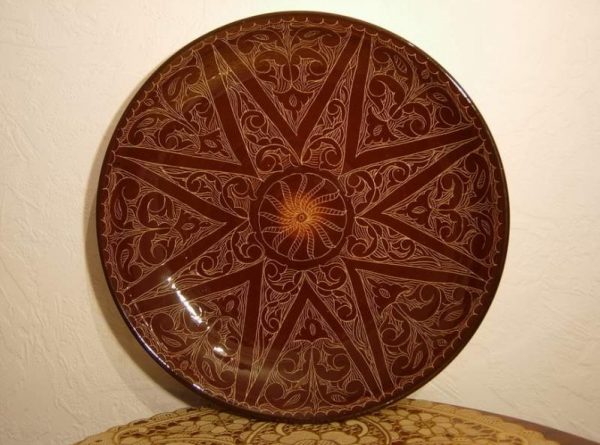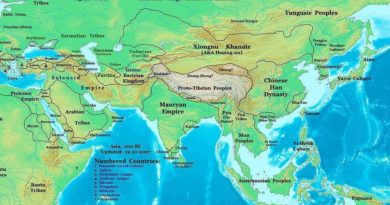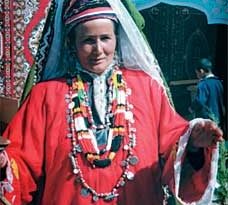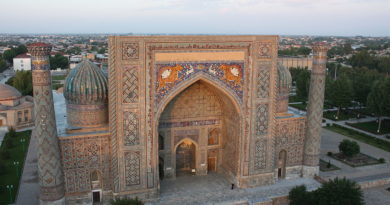Culture of Uzbekistan

Uzbekistan is proud of its unique culture, which has been forming for thousands of years. The history and culture of our ancient land have been formed under the influence of different dynasties and peoples, living in Uzbekstan.
Literature
At the development basis of modern Uzbek literature is rich folklore – speakings or oral folk arts. The people wrote and handed down heroic epics, whose characters were heroes, presented in the images of evil forces, who were fighting against their oppressors and enslavers. This is the way how epics of Uzbek folklore, such as “Koroghlu” and “Alpamysh” were created.
Alpamysh, which tells the story of courage and bravery of the Uzbek warriors, survived centuries and became a real monument of oriental literature.
Another genius of people’s art is a cycle of tales and legends about Effendi – Hodja Nasreddin, a deft, witty dodger, who gives lesson to the greedy rich and the powers that be with his mischievous pranks.
The XI century featured a host of works, based on religious norms of Islamic morality. They are the insightful poem “Kugadau Bilig” (“Knowledge of Grace” or “The Science of Happiness”) (1069) by Yusuf Khas Khadjib Balasaguni (Yusuf Balasagun), the poem “Hibat al-Haqa’iq” (“The Gift of the Truth”) by Akhmad Yugnaki, and, of course, “Dictionary of Turkic Dialects” (1072-74), compiled by Makhmud Kashgari.
The golden age of Uzbek literature fell on the historical epoch of Amir Timur and his dynasty. Its popularity is attributed to the fact that the works become more secular and free from excessive religiosity. It is that period, when the great oriental poet, philosopher and politician Alisher Navoi, who is considered to be a classic of Uzbek literature and founder of the Uzbek language, was flourishing. His immortal works –“Chordevon” and “Khamsa” are included in the thesaurus of world literature and translated into hundreds of the world’s languages.
The last of the Timurid dynasty, the founder of the Great Mogul state in India, Zahiriddin Mukhammad Babur was not only a talented ruler and commander, but also notable as an outstanding poet of the time. His epic poem “Baburnama” describes the history of the peoples of Central Asia, Afghanistan and India, became a valuable historical and literary monument of the time.
Uzbek literature of the XVIII-XIX centuries is lyric and mainly devoted to love. During this period were flourishing such poets as Nadira Uvaisi, Mashrab, Khorezmi and so on.
At the end of the XIX and beginning of the XX centuries began a new modern period of Uzbek literature; which was presented by outstanding persons such as poet Mukimi and writer, poet and satirist Furqat. The Soviet era gave us such talents as poet and playwright Hamza Hakimzade Niazi, poet and writer Sadriddin Ayni, the first Uzbek novelist Abdullah Kadiri, writer and philosopher Fitrat. Their literary traditions were continued by Oybek, Gafur Gulam, Abdulla Kahhar Khamid Alimjhan, Uygun and others.
Music

Traditional Uzbek music has ancient sources. Folklore Uzbek music which came from the people is divided into many genres.
Among them are lullabies and children’s songs as well as ritual, work, daily life songs, songs-dialogues, dancing and lyric fados.
Classical Uzbek music is makom – a special musical genre, which is characterized by drawling touching performance. Many lines of the poets of the East (Jami, Navoi, Fuzuly, Hafiz, Uvaisi, Nadira, Mukimi Ogahi, etc.) were put to this music. The diversity of folk instruments also confirms the wealth of Uzbek musical tradition: bowed — gidjak, kobuz, setor and sato; fretted — dombra, dutar tanbur, ud and rubab; stringed hammered string — chang; wind-reed — sibizik, bulaman, surnay and koshnay; wind flute — nai and gadjir; brass — karnay; drums — doira, nagora,, chindaul, safail, koshuk etc.
Uzbek Dance
National Uzbek dance is very expressive. It presents all the beauty of nation. The main difference of Uzbek dance from dances of other Eastern nations is the accent on complicated and expressive hand gestures and animated facial expressions. Uzbek dance includes two categories: classic traditional dance and folklore dance.
Classic traditional Uzbek dance is the art, studied in choreographic schools and demonstrated on a stage. There are three schools of Uzbek dance: Ferghana, Bukhara and Khorezm. Ferghana dances are differed with softness, smoothness and expressiveness of gestures, light sliding step, original motions. Bukhara dance is distinguished with sharpness of gestures, leaned back shoulders and very beautiful goldwork costumes. Khorezm style differs with original and distinctive motions.
Folk Uzbek dance includes traditions of almost any region and displays wonderful variety. People dance them on weddings and family holidays, rural and urban events. These dances are handed over from generation to generation and preserve ancient dance traditions as well as today and past lifestyles.
Uzbekistan Fine Art
Oriental craftsmen always were renowned for own peculiar fine talent, which is shown in full in decoration and adornments of magnificent palaces, mausoleums and other religious buildings. As a rule, general fine art works include ornament, patterns and calligraphy. Islamic traditions forbid to image people and animals, therefore craftsmen started developing more abstract directions, bringing them to perfection. Later a new direction appeared in Uzbekistan fine art. It was the miniature, small bright colorful pictures lacquered, which decorated palaces and rich houses.
Uzbekistan fine art was in unbelievable flourishing during the general cultural boom in 14-15th centuries, the epoch of Timurid Dynasty. Ancient Samarkand mausoleums preserved details of wonderful landscape paintings. Some palaces of Amir Temur were decorated with scenic pictures of Tamerlane, his wives, sons and associates and scenes of rich feasts. The great medieval artist was the inimitable master of oriental miniature Kamoliddin Behzod.
The next rise of Uzbekistan fine art dates back to the 19th century. The miniature art reaches its highest flourishing. It is glorified by Akhmad Donish (1827-1897), Abdulkhalik-Makhmum and others.
Uzbekistan fine art of 20th century developed under the influence Russian painters Itinerants. Their outstanding works furthered the development of oriental school of portraits and landscapes, development of realism genre in painting art.
Handicrafts and Applied Art
The applied art of Uzbekistan is original and exclusive creative work of national craftsmen and masters. Putting their hearts and souls into works, for many centuries, they have created unique pieces and articles: housewares, house adornment, inimitable fabrics for dressy dresses, colorful tableware.
The works of Fergana, Samarkand, Bukhara, Khiva and other masters have been historically notable outside the country and still continue to stir interest of lovers of the beautiful from all over the world. Many schools of suzané embroidery and ceramics, skullcaps of different type and purpose, national pichak-knives for every occasion, silk and woolen carpets, silk and chasing – the wonderful works, produced by local masters for centuries, make a unique exoticism of Uzbekistan.
Sui generis centers and schools of folk arts and crafts were formed in the territory of Uzbekistan for centuries. Each region has its own direction. Chust, Namangan region, is widely known for its skullcaps and knives; Rishtan, Fergana region, turquoise ceramics; ancient Margilan, satin with iridescent play of colors; sacred Bukhara, gold embroidery.
Uzbekistan has been developing arts and crafts from century to century, handing down the unique works of famous and unknown artists, which strike with the wealth of artistic imagination and perfection of shapes.
Ceramic Art
.jpg) Uzbekistan ceramic art through many centuries was the most developed craft in this region. Ceramic masters made of clay various necessary potteries: cups, pialas, dishes, jugs. Then the pottery was painted and glazed.
Uzbekistan ceramic art through many centuries was the most developed craft in this region. Ceramic masters made of clay various necessary potteries: cups, pialas, dishes, jugs. Then the pottery was painted and glazed.
The most outstanding schools of traditional ceramic art were Rishtan, Gijduvan, Khina, Samarkand, Gurumsay, Shakhrisabz, Urgut, Khorezm, Tashkent. Each school was distinguished for own style and features.
The most famous Uzbekistan ceramic articles are made in Rishtan. It is renowned for the blue glaze Ishkor. It is natural dye, produced from plant ash. Rishtan ceramics is mostly decorated with herbal elements as well as images of kumgans, birds, fishes, elements of architectural adornments.
Embossing
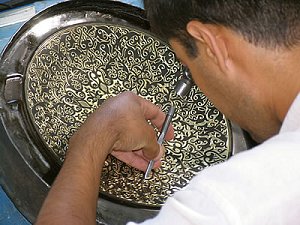 Copper embossing is one of the most ancient applied arts of Uzbekistan. Over centuries the embossed copper art in Uzbekistan has been the traditional art for many regions of Central Asia and today you can find a great number of articles, decorated with various patterns and motifs of embossing. The main workshops of embossed copper articles were located in Bukhara, Khiva, Kokand, Samarkand, Karshi, Shakhrisabz and Tashkent.
Copper embossing is one of the most ancient applied arts of Uzbekistan. Over centuries the embossed copper art in Uzbekistan has been the traditional art for many regions of Central Asia and today you can find a great number of articles, decorated with various patterns and motifs of embossing. The main workshops of embossed copper articles were located in Bukhara, Khiva, Kokand, Samarkand, Karshi, Shakhrisabz and Tashkent.
Embossed articles of the 18-19th centuries were distinguished for harmonious proportions, plastic and expressive lines and ornamental patterns. Embossed and chased metal articles of that time were valued not only for their decorative qualities. They also played an important role in everyday life as the indicators of social status and wealth.
Local schools of artistic embossing were established in Uzbekistan in the 19th century. Schools differed with own style of ornamentation, form and design as well as with an approach to emboss. In the 19th century Bukhara and Khiva masters of embossed copper art became very popular. They distinguished with the great plasticity of shapes, classic balance of proportions, ornamental motifs and the original technique of engraving and embossing.
Wood carving art
From times immemorial such wood articles as jewelry boxes kuticha, book holders — lavhi, carved tables were traditional for the East. All of them show all the beauty and wealth of traditional floral and geometric ornament. Carvers used wood of such trees as elm, walnut, sycamore, juniper, mulberry. Khiva, Bukhara, Samarkand, Tashkent and Fergana were and are the renowned centers of woodcarving.
Gold Embroidery
Gold embroidery is embroidery with gold and silver thread — a very ancient kind of needlework. Historical records give the evidence of the existence of gold embroidery as early as in the Middle Ages. This kind of needlework was wide-spread in many parts of the world, and Uzbekistan was not an exception. However, its special embroidery techniques and national patterns make the golden-embroidered products a unique and original.
The basic cloth for Uzbek gold embroidery is velvet of different colors, which makes the gold threads of the embroidery especially shaded, emphasizing every stitch and intricate pattern.
Over the whole history of its existence, gold embroidery has been developing universally in Nurata, Shakhrisabz, Samarkand, Jizzak, Tashkent, Fergana and Pskent. However, it was particularly developed and widely spread in Bukhara in the mid XIX century, in the workshops at the palace of the Emir of Bukhara, where skilful masters were embroidering garments of the ruler and his courtiers. And up to now, the Bukhara gold embroidery is famous even outside Uzbekistan.
Embroidery
For a long time it was accepted to decorate clothes, tablecloths, towels etc. with beautiful embroidery. Embroidery art goes back to a distant past. Centuries-old traditions have defined the specificity of ornaments, composition, and sewing techniques, peculiar for each region of Uzbekistan. Tashkent embroidery is characterized by maroon and bright red colors with large motifs. For Samarkand – same large motifs but with cooler tones. And Bukhara embroidery differs with much smaller, elegant floral patterns and iridescent multicolor. Among the traditional manufacturing centers of suzane are Nurata, Bukhara, Samarkand, Shakhrisabz, Tashkent and Fergana.
Dolls
It seems not so long ago original puppet shows gathered crowds of appreciative audience on bazaar squares. However, the art of puppet dolls has been forgotten, but thanks to masters who sincerely desired to revive the origins of folk art, it was restored.
Today Uzbek dolls dressed in national costumes have become a traditional Uzbekistan souvenir, which can be used not only as a toy, but also as an interesting, colorful detail of the interior. Mainly, they represent different heroes or national characters of literary works.
Carpet weaving
Ancient traditions of Uzbekistan carpet weaving are revived today in many regions of Uzbekistan. Bright, original, intricate patterns, distinctive color (from red-brown to red-blue), brightness, and countless options of patterns and ornament made local carpets renowned in many countries.
Homemade carpet weaving is developed in Ferghana Valley, Nurota Mountains, Kashkadarya, Surkhandarya, Syrdarya region, Karakalpakstan. Samarkand, Urgut, Kokand and Khorezm are the centers for the carpet weaving and sale. Craftsmen produce long pile and short pile carpets (dzhulhirs, gilyam), pileless carpets (rugs). The characteristic feature of short pile carpets is their red-brown tint, lit up by the harmony of light-colored details of the principal medallions, which usually appear in geometrical shapes.
Lacquer Painting

Though many secrets of Uzbekistan lacquer miniature were lost, modern Uzbek artists and craftsmen succeeded in revival of this art, creating own painting style and keeping centuries-old principles and forms of lacquer miniatures. In current lacquer painting traditions the technology of Palekh and Oriental miniature painting is used. Mainly, lacquer painting decorates various small wood boxes, pencils boxes, tables, chesses. Uzbek lacquer paintings is made by natural dyes, stirred with the egg yolk.
Today articles with lacquer painting are Uzbekistan traditional souvenirs. Moreover, beautiful miniature lacquer painting of modern Uzbek artists is displayed in various exhibitions and museums within Uzbekistan and abroad.

